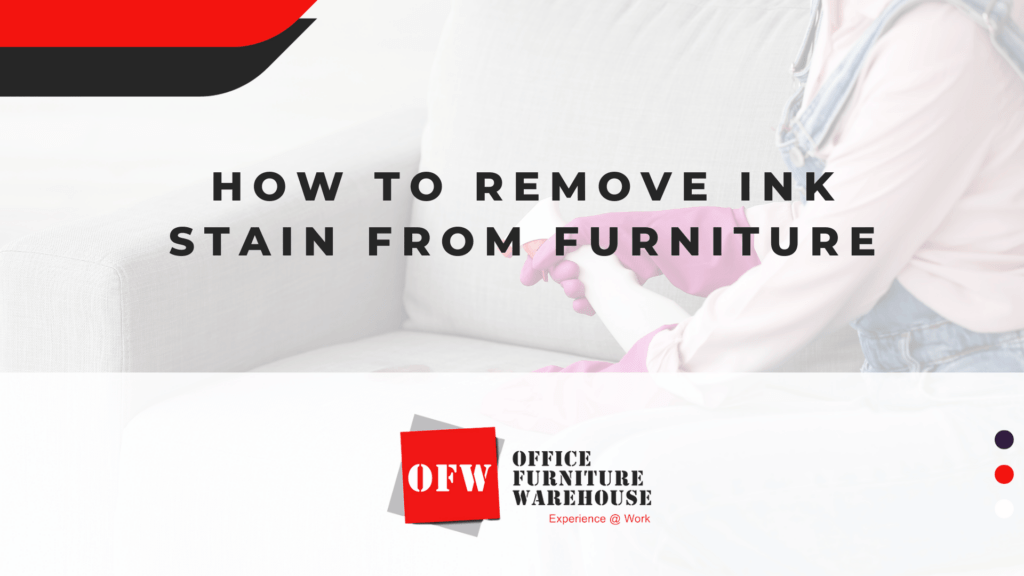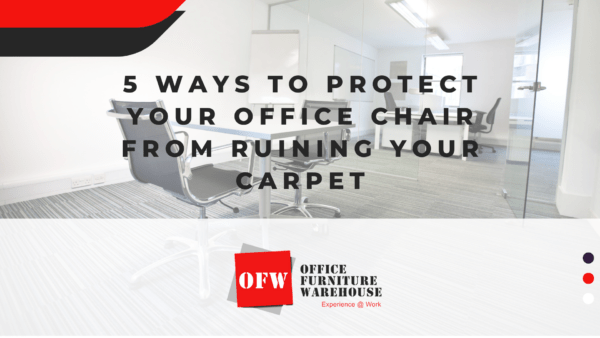How To Remove Ink Stain From Furniture

Dealing with ink stains on furniture surfaces is a common challenge faced by many households. Accidental pen scribbles, leaky pens, or a spilled inkwell can all lead to frustrating ink stains. This often leaves people wondering how to remove ink stain from furniture and restore its natural state.
You can remove ink stains from furniture by using rubbing alcohol, detergent solutions, gentle abrasives, leather-safe solvents, homemade leather cleaners, etc. These techniques have proven successful in eliminating ink stains from various types of furniture materials.
Do you have an ink-stained fabric sofa, a leather armchair, or a wooden desk? If so, find out about the necessary tools and techniques you need to tackle ink stains head-on.
Types of Ink Stains
Here are the types of ink stains you’ll often find on your furniture:
1. Ballpoint Pen Ink
Ballpoint pen ink stains are among the most common types found on furniture. These stains are typically caused by accidental pen marks or when a pen leaks onto the furniture surface.
Ballpoint pen ink is usually oil-based, which makes it more challenging to remove compared to other types of ink. The oil-based nature of the ink can cause it to penetrate the fibers or pores of the furniture material, making the stain more stubborn.
2. Permanent Marker Ink
Permanent markers are designed to be resistant to fading or smudging, making them particularly challenging to remove. The ink contains strong pigments and solvents that stick firmly to the furniture. These stains often require more aggressive cleaning techniques to break down the ink and lift it from the surface.
3. Fountain Pen Ink
Fountain pen inks are usually water-based, and they can seep into porous materials such as fabric or unfinished wood. These stains may spread quickly upon contact, making it important to address them promptly. Water-based ink stains may require specific techniques to prevent the ink from spreading further and to minimize its penetration into the furniture material.
4. Gel Pen Ink
Gel pens use ink that contains pigments suspended in a gel-like substance. The gel ink provides a smooth and vibrant writing experience but can pose a challenge when it comes to stain removal. The gel-based nature of the ink requires different cleaning approaches compared to other inks.
5. Whiteboard Marker Ink
Whiteboard marker ink stains are typically caused by dry-erase markers used on whiteboards. Dry-erase markers contain ink that can be easily wiped off non-porous surfaces such as whiteboards.
However, when the ink comes into contact with furniture, it may leave faint or noticeable stains. Removing whiteboard marker ink stains requires specific techniques to effectively lift the ink without damaging the furniture surface.
Precautions for Ink Stain Removal
Taking some precautions before removing ink stains will ensure the best possible outcome and avoid further damage to your furniture. Here are some important precautions to consider:
1. Test in a Hidden Area
Testing cleaning solutions in a hidden or inconspicuous area of the furniture is essential. That’s because the test will help you determine if the cleaning method causes any adverse effects, such as discoloration or damage to the material.
Choose a small, discreet spot, apply the cleaning solution, and observe the results after it dries. If there are no negative effects, you can proceed with confidence.
2. Use Gentle Techniques
Vigorous scrubbing or rubbing can spread the ink further into the fabric or surface, making the stain more difficult to remove. Instead, opt for blotting or dabbing motions with a clean cloth or sponge to lift the ink gently. Also, avoid using abrasive materials or harsh brushes that can damage the furniture surface.
3. Avoid Excessive Moisture
While some ink stain removal methods may involve the use of liquids or solvents, it’s crucial to avoid excessive moisture. Excessive moisture can cause the ink to spread, blur, or seep deeper into the material, exacerbating the stain. Use minimal amounts of cleaning solutions or water and make sure to blot or absorb excess moisture promptly. It’s also advisable to dry the furniture thoroughly after cleaning to prevent any lingering moisture that may lead to mold or mildew growth.
4. Follow Manufacturer’s Instructions
If your furniture has specific care instructions or comes with a manufacturer’s manual, it’s important to follow those guidelines for ink stain removal. Some materials may have specific cleaning requirements or limitations, and deviating from the recommended instructions may result in damage. Check the manual or contact the manufacturer if you are unsure about the appropriate cleaning methods for your furniture.
5. Seek Professional Help if Needed
In some cases, particularly for valuable or delicate furniture pieces, seeking professional help for ink stain removal may be best. Professional cleaners have the expertise and specialized equipment to tackle stubborn stains without causing damage. If you’re hesitant or unsure about removing the ink stain yourself, consider reaching out to professionals who can assess the situation and provide appropriate solutions.
How to Remove Ink Stains from Furniture
When it comes to removing ink stains from furniture, one first and important step is to blot the stains. Blotting helps absorb excess ink and prevents it from spreading further into the material.
To blot stains, you start by using a white cloth or paper towel. Then, gently press the cloth onto the stain to absorb as much ink as possible. Avoid rubbing, as it can spread the ink further.
After blotting, you can proceed with the cleaning methods that are appropriate for your furniture material. That said, here’s how to remove ink stain from furniture materials like leather, wood, microfiber, etc.
1. Fabric Furniture
- Dampen a clean cloth with isopropyl alcohol or hairspray containing alcohol. Lightly dab the ink stain, working from the outer edges toward the center. Blot the area with a dry cloth intermittently to absorb the ink.
- Dampen a clean cloth with water and blot the treated area to remove any residue. Blot dry with a separate cloth and allow the fabric to air dry completely.
2. Leather Furniture
- Apply a small amount of leather cleaner or mild soap to a clean cloth. Gently wipe the ink stain, using light circular motions. Avoid excessive moisture or scrubbing.
- Dampen another cloth with water and wipe away any residue from the leather cleaner. Immediately follow with a leather conditioner, applying it according to the product instructions. Allow the leather to air dry.
3. Wood Furniture
- Mix equal parts baking soda and water to create a paste. Apply the paste to the ink stain, gently rubbing it in with a soft cloth or sponge. Let it sit for a few minutes.
- Dampen a clean cloth with water and wipe off the paste, gently rubbing the stain. Dry the area with a separate cloth. If necessary, apply furniture polish or wax to restore the wood’s shine and protect it.
4. Microfiber Furniture
- Moisten a clean cloth with rubbing alcohol.
- Gently blot the ink stain with the cloth, starting from the outer edges and working inward.
- Dampen a cloth with water and blot the treated area to remove any residue. Allow the fabric to air dry.
5. Vinyl or PVC Furniture
- Create a cleaning solution by mixing mild dish soap or detergent with warm water.
- Moisten a cloth with the cleaning solution and gently wipe the ink stain.
- Dampen a cloth with water to remove any soap residue. Wipe the area again with a clean, damp cloth. Dry with a separate cloth.
Finding ink stains on your furniture can be disheartening, but knowing how to remove ink stain from furniture can help you restore your furniture’s appearance. Acting quickly and using suitable cleaning solutions are important for successful stain removal.
This article looked at a few ways you can achieve effective cleaning. Start by blotting the stain to absorb excess ink. For fabric furniture, use cleaning solutions like isopropyl alcohol or fabric stain removers. Leather furniture requires gentle wiping with leather cleaner and conditioning. Wood furniture benefits from baking soda and water paste, followed by rinsing and polishing. Other furniture materials such as microfiber, and vinyl/PVC have their specific cleaning methods. Prompt action increases the chances of success, but always test any solution on a small area first.






